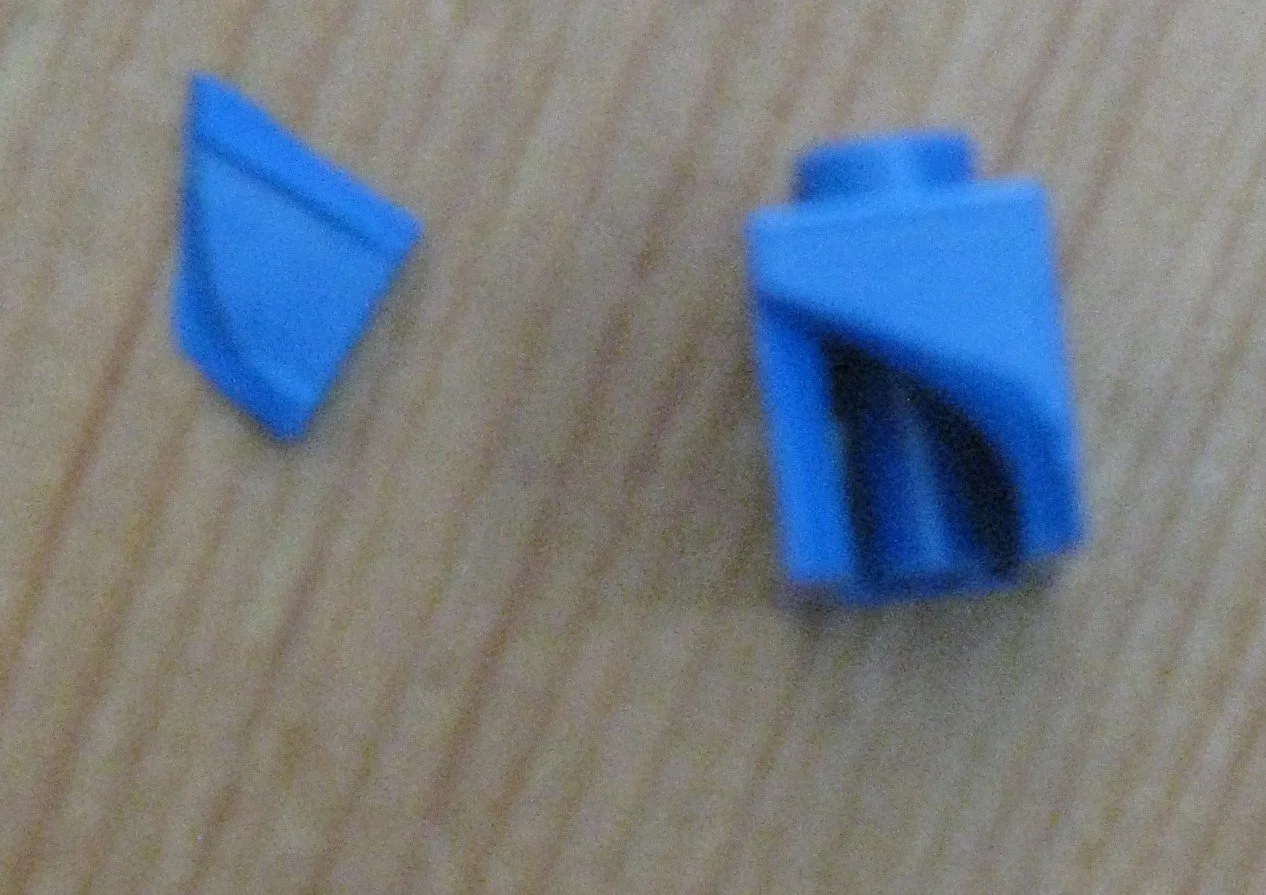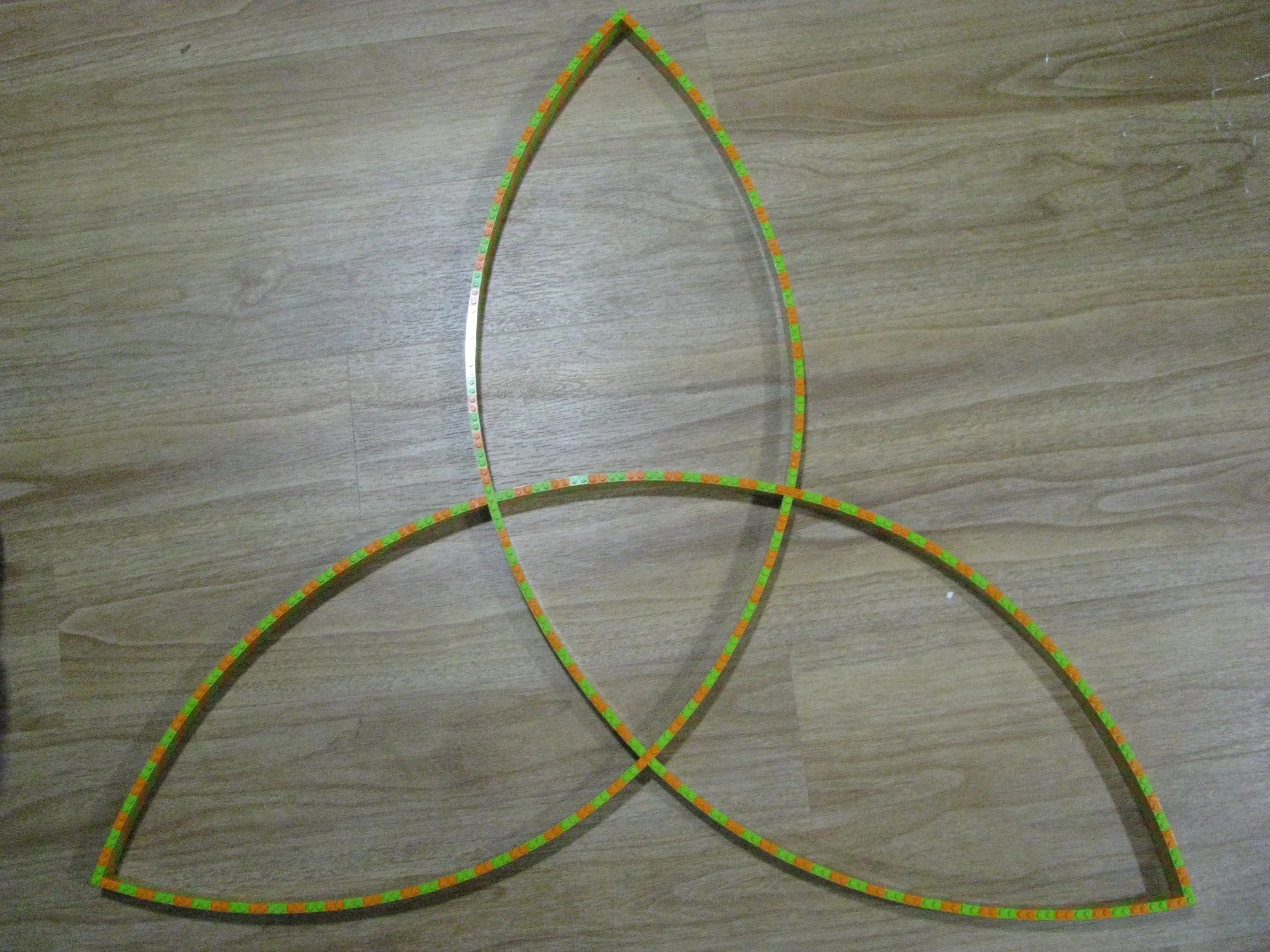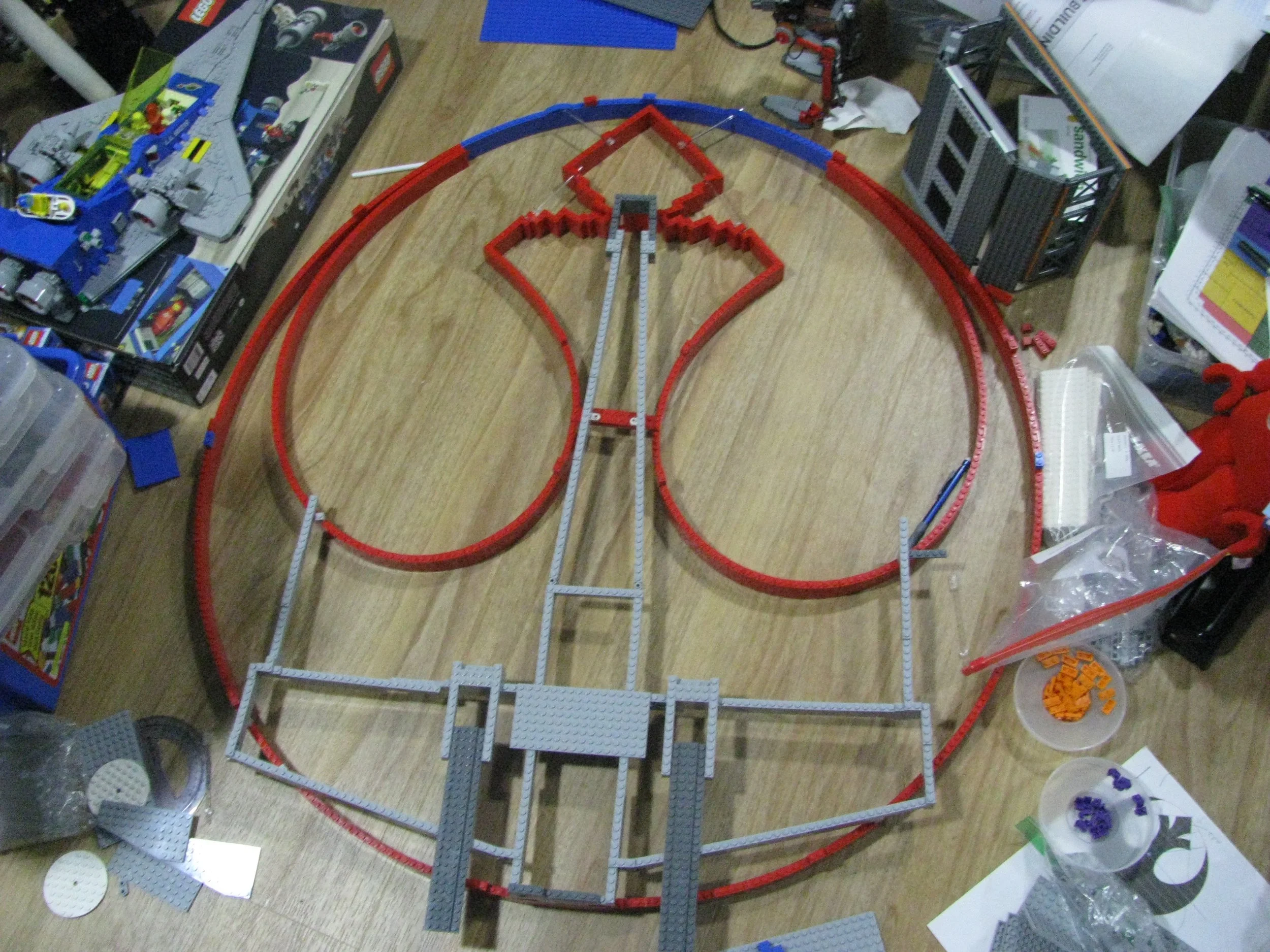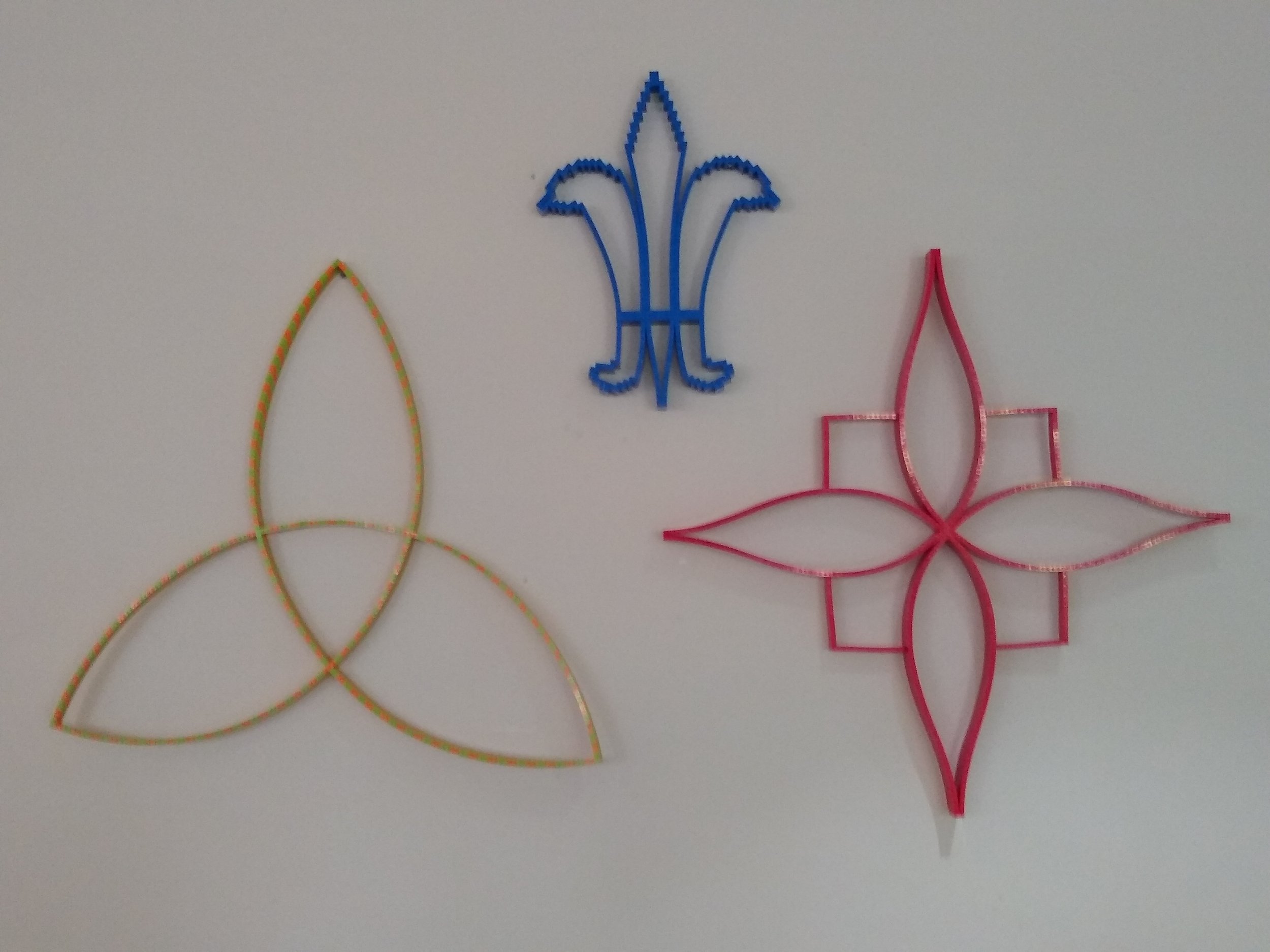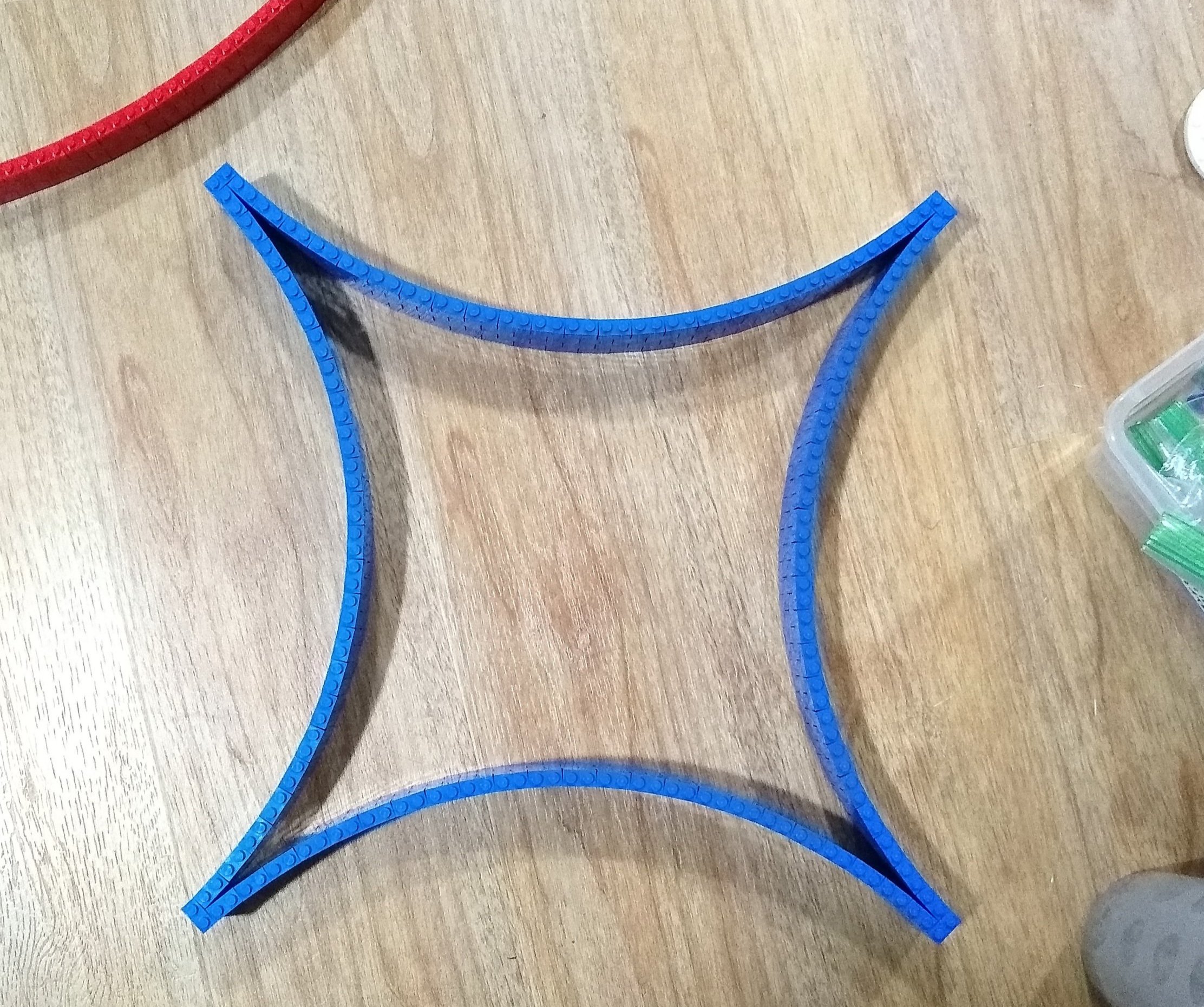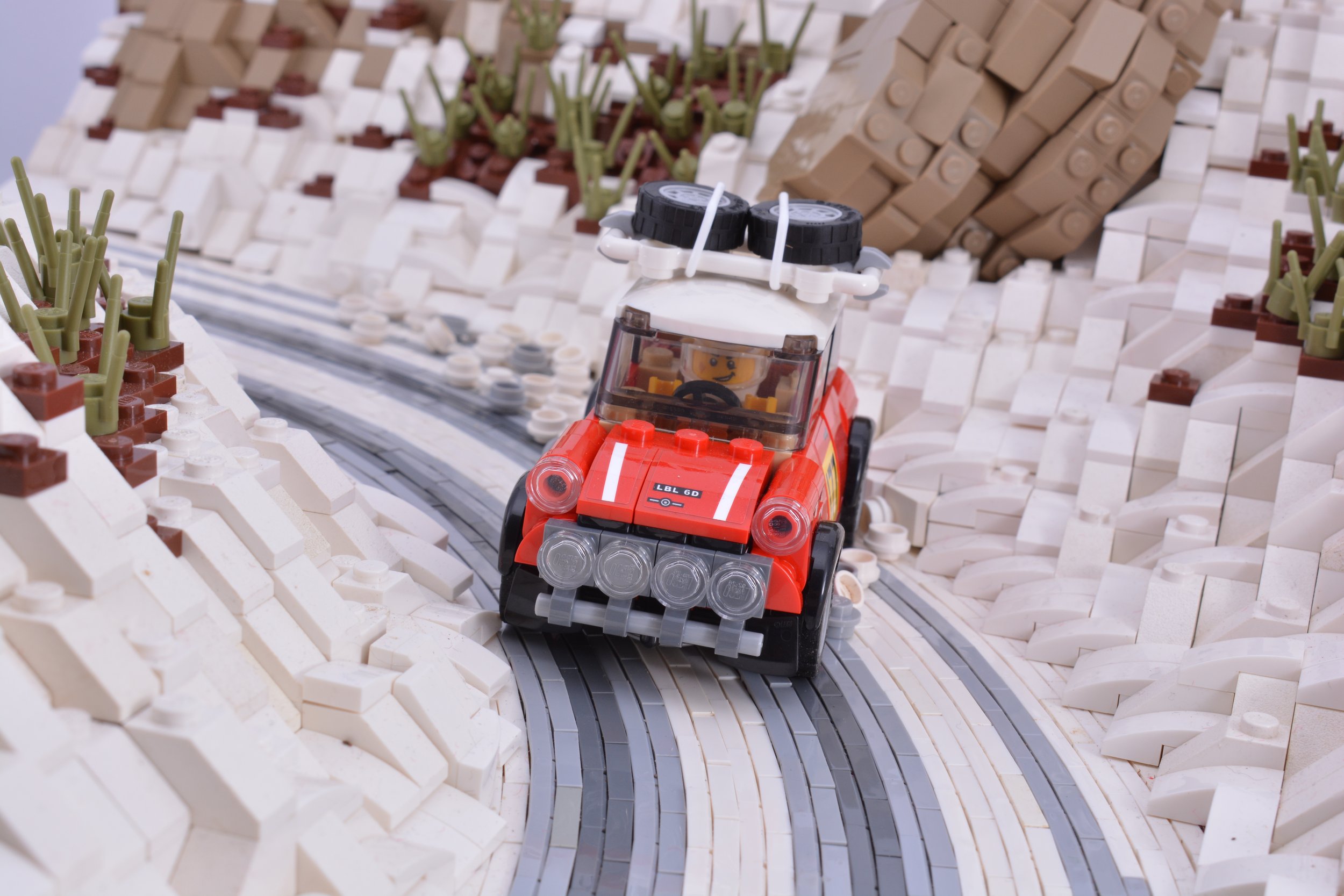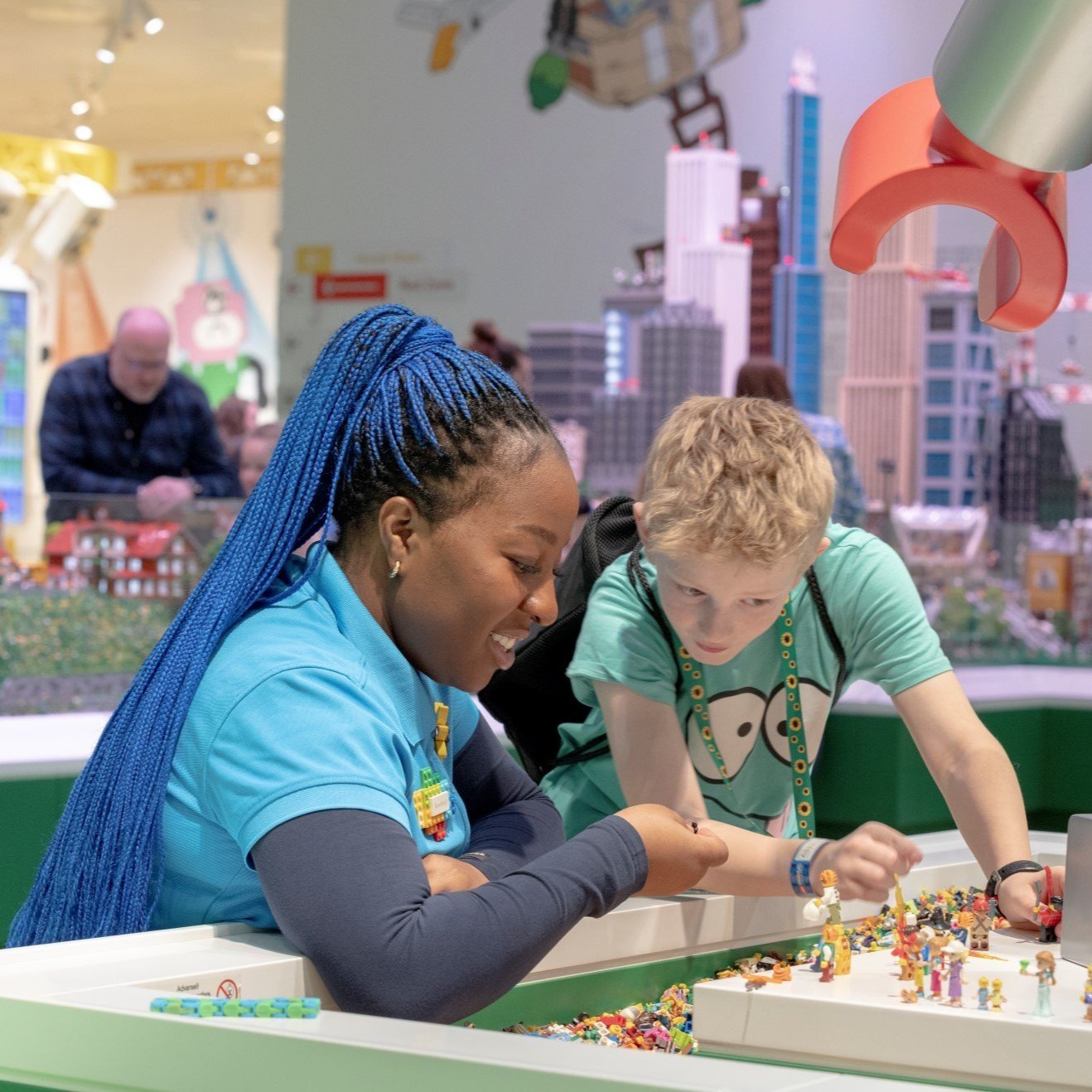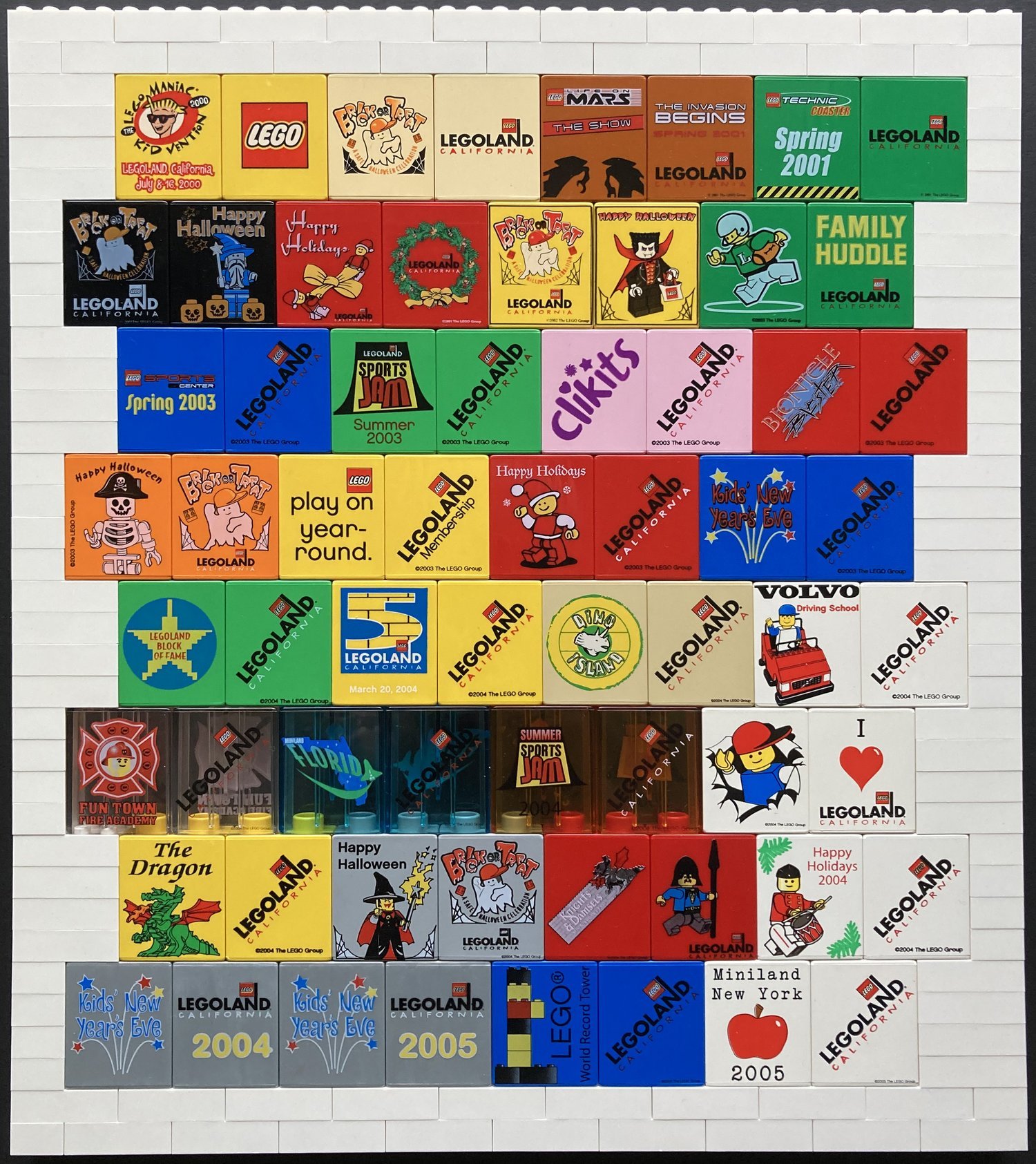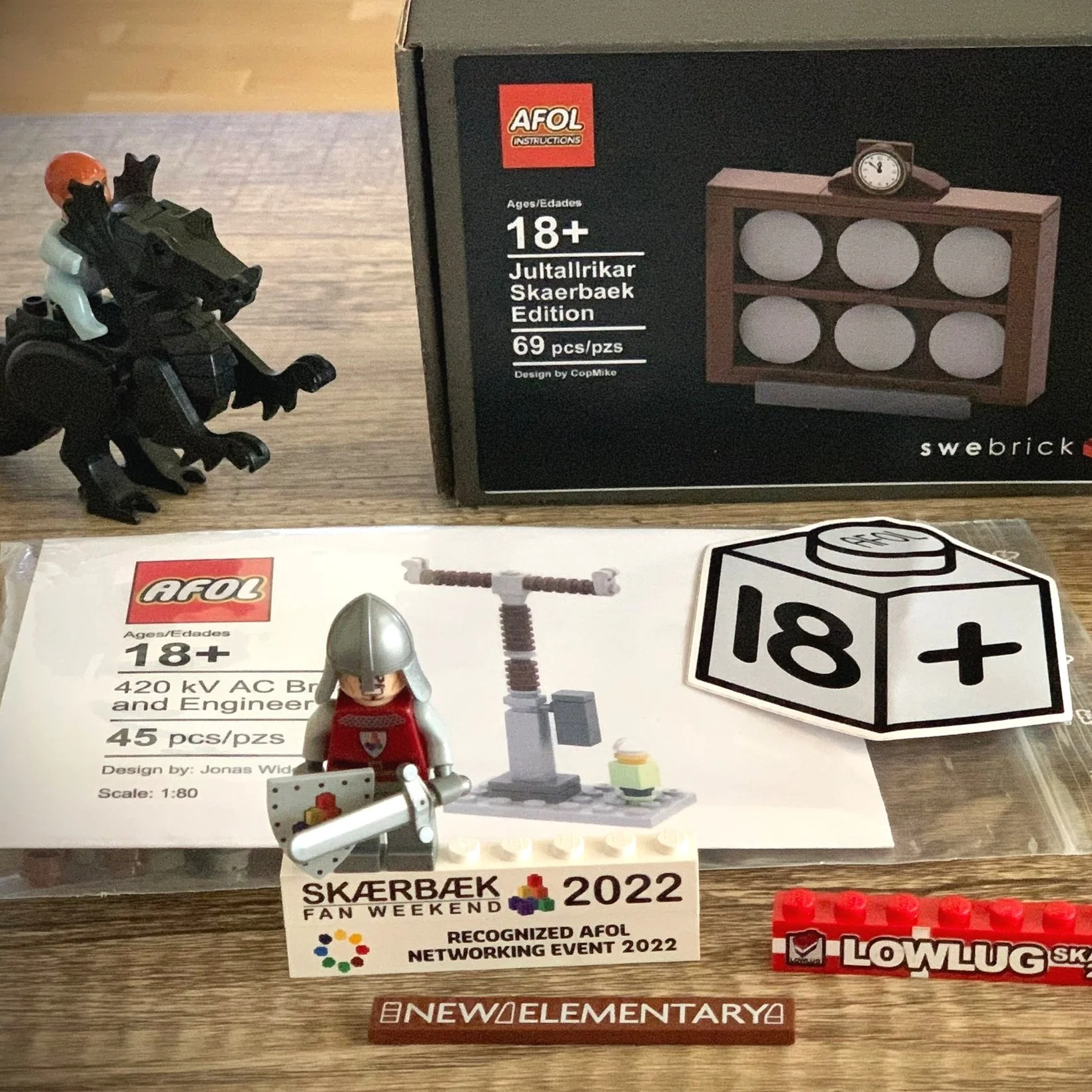The Basics and Beauty of Brick Bending
/LEGO by nature lends itself to more square and rectangular shapes—it’s where most of us start: buildings, blocky vehicles, and squared-off attempts at capturing organic shapes. The ever-widening parts pallete allows for more rounded and smooth shaping, and there are many techniques for escaping the grid. Curves are still challenging but we can take advantage of the gaps between LEGO bricks to make curves!
You can’t really talk about “Brick Bending” without looking at the work of Jeff Sanders. My initial exploration into brick bending is largely based on his videos. He truly pushes the brick in some fantastic ways. Check out his YouTube channel and website for some fantastic creations. His work tends to be on very large scales which is fun to look at all the geometric fun he warps the bricks into. Despite the sort of clickbait titles of his YouTube videos, they are well-produced and work you through the builds nicely.
But what makes LEGO brick bending possible?
Science
When building with LEGO you will notice that there are slight gaps between the bricks. These gaps exist for a reason. If the bricks perfectly filled up the space they would be a lot harder to both assemble and disassemble. Also, the gap accounts for tolerance variation between bricks. Adam Savage describes tolerances this way in his excellent book Every Tool’s a Hammer:
“In engineering, tolerance refers to the amount of permissible variation in the manufacture of a physical object.”
(Every Tool’s a Hammer is a great read—it’s part memoir, part maker/shop philosophy, and part Savage musing on various things, though I disagree with his “always be knolling” statement at least when it comes to LEGO building.)
LEGO keeps a tight eye on their tolerance and cycles molds out as they wear out, but even so, pieces will vary slightly in size and the gaps account for this. But this isn’t a bug, it’s a feature! We can take advantage of the gaps to introduce curvature. If you’ve ever built a big wall of 1x2 bricks, say using masonry bricks to build a modular style building, you may notice some flex and give in the wall when trying to place an upper story on top of it. This is because of the gaps and freedom that 1x2 elements have to rotate slightly about the stud below. With several 1x2s built into a wall, we get many degrees of freedom that allow for bending.
We can make a very large circle by linking many 1x2 elements together and gently bending the line of bricks into a curve. There are about +2 degrees of play. So a circumference of ~180 1x2s will make a circle just due to tolerance stack up. (Roughly 3 feet or 0.9 m in diameter, if you were curious.) While this is fun, it’s not terribly useful unless your plans are to build a very large-diameter tower.
But here, young Padawan, the dark side calls! If we use just a little bit of force we can bend the bricks a bit further and get a tighter circle. If we are clever, many other shapes become possible on a large scale. And we can even use the internal forces to balance each other and make the structure more stable. But beware—too much force and the bricks will break (especially older bricks) or the structure will undergo Rapid Unplanned Disassembly (RUD) because the internal forces exceed the friction of the clutch power of the bricks.
Beam Bending
So let’s talk about those internal forces for a moment with some classical beam bending theory. While I could go deep into the engineering and math behind it, even make a reasonable approximation of the forces applied, that’s a lot of math. While this is BrickNerd and we’re all different flavors of nerds, I suspect diving that deep would likely not be exciting for many of you. For our purposes, we’ll just talk about how the forces are distributed in the beam when bent.
The below image shows a cantilever beam in a neutral state. All three parts are in line.
If we push on the free end the beam will deflect. You’ll notice that the three layers no longer line up at the end. That is because the layers are not connected. This allows us to think about the internal loading of a beam. The yellow middle section is the neutral axis. If the beam was all one piece and linked together, the upper blue part would have to stretch (be in tension) and the lower red part would be compressed.
With LEGO bricks things are a bit more complicated because we have a noncontinuous material. This makes the math really messy, but for us, it just means there is no tension load passed across the upper portion of the bricks, but the lower inside part of the curve is put under compression. This can lead to the deformation of the bricks or even breakage!
Sizing
I did some simple experiments to try to determine the sizing of brick-bent circles. Now the data is pretty limited, I was using new 1x2 bricks from the Pick-a-Brick wall from my local LEGO Store. Plates may have different limits which are also affected by thickness as the examples were only two or three bricks tall. Increasing the number of layers may add strength in a variety of ways.
I found the range of 120 to 180 studs in circumference to be the workable limit for a circle. Once you get above the 180 stud circumference the internal forces start to drop and holding a circular shape gets difficult. (My goal, which we’ll get to in a bit, involved MOCs to be hung on a wall, so maintaining as close to a circle was important.) The tendency to stretch into an ellipse shape made getting a diameter difficult, thus why I stopped using a stud ruler and stuck with conventional measurements. Also, it is fun to note as PI π day was earlier this month the diameter is within a stud or two of the known formula Circumference = PI * Diameter.
Shaping
Circles are cool and all but what else can you do with brick bending? Well, you can make intersecting circles like the Olympic Rings and you can make corners that force concave or convex shaping. This is where my personal MOCing has resided for the last two years.
Trinity Knot
In 2021, I built a trinity knot out of lime and orange bricks. I’ve had a fascination with Celtic Knotwork since high school, and after stumbling into brick bending, wanted to give it a try in LEGO. (I really wanted to mix in a shade of purple but lime and orange were all that were on the PaB wall at the time.)
The points at the three corners are made with 90-degree placement of the bricks at the three points, and with the addition of 1x3s to the 1x2s, three right-angle intersections are formed to make the center triangle.
Rebellions are Built on Hope and Cool Logos
My goal last year was to build the Rebel logo from Star Wars. It’s an interesting shape, well-recognized and very different from most Star Wars builds. Sadly this was not to be. The three-pronged top was a challenge to get to look right. I played with stepping the bricks and got something I was mostly happy with.
The problem was the lower half. The curvature needed in the middle section forced the outer circle to be huge and unstable. (You can get an idea of scale from the clutter on my floor in the picture!) It’s why I generated the data in the table above! I had the novel idea of building the outline of an X-wing over the top to reinforce it, but that didn’t pan out either.
New Growth from the Ashes
The red for the rebel logo morphed into this flower-like build. The points use a 180-degree turn that forces a concave shape near the tips. The four smaller right-ish angles pull the concave shape into a convex shape heading to the center 90-degree angles, which further enforces the convexness.
This build had a lot of iterations to get all the lengths the same and to balance the forces. I exploded the center section at least a dozen times—it’s under a fair amount of stress. Originally it had an outer ring that I liked the look it gave the build, but the large diameter was very unstable and if picking it up didn’t lead to a RUD event, laying it back down certainly did! Ultimately, I removed the outer ring and made the four big petals five bricks tall so it is sturdy enough to pick up
Fleur-de-Lis
Lastly, I wanted to try something different that I hadn’t seen brick bent before. A settled on a Fleur-de-Lis. My initial thought was that a shorter outside curve would pull a longer inside curve to make the left and right petals.
I couldn’t get quite enough curvature to really get the look. So I started to play with the stair-stepping I’d come up with for the abandoned rebel design and got something that I was quite pleased with.
all three on display hanging on a wall for a month!
Out-of-plane instability
Sometimes forces do weird things! I built a four-pointed shape just for an example and instead of pulling itself apart, it wanted to collapse out of the plane with the build and fold up. This build demonstrates the concave curves the 180-degree corners can make. 90-degree corners will make convex curves unless it is four-sided then you get straight lines, but you knew that last bit.
Applications
Let’s look at a few MOCs where brick bending is part of a larger piece. Big thanks to fellow BrickNerds Are, Ted, Miro and Aiden for helping round these up!
Ruyi Bridge by –Brixe
We’ll start with the Ruyi Bridge from Shenxianju Valley in China’s Zhejiang province. Builder –Brixi captures the organic curves of the sightseeing bridge with a brick-bent structure. Utilizing brick bending allowed for nailing the organic shape of the bridge but also its gossamer feel.
Garden of the Galaxy by Emily and Liam Norris
Emily and Liam’s initial build in Season 3 of LEGO Masters US features a spaceship with large rings. I was impressed with them going with the brick-bent rings early in the competition—definitely a bold choice that set them apart early on. (Also check out Emily’s guest article here on BrickNerd if you missed it!)
Scrooge’s Money Bin by David Lambertucci
Are found (and photographed!) this delightful Scrooge McDuck’s Money Bin build at the Bricks in Florence Festival recently. David integrated the curved sides into the flat front very well. Plus the dome and dollar signs are very nice!
Treacherous Roads by Simon Pickard
Simon uses a different style of brick bending to build roads that I’d rather not drive on! First up is his Monaco Hairpin from 2017. Then his Snow Rally – Monaco from 2019. In both, the curved road really captures the danger and excitement of the auto races depicted!
Ring Rise by Inthert
I could go on for a while about this beautiful sci-fi MOC that Inthert built for Space Jam 2021/2022. He uses the same technique as Simon to build planetary rings. To keep it short I love the loneliness of the astronaut, the basalt columns, and the brick-bent rings with the tapered black ring gaps!
End Table Ensemble by Ted Andes
Ted used multiple forms of brick bending in this life-size end table. The legs are bent, the edge of the table is bent, and the lamp shade and the glass are bent using rounded elements (they provided more gaps and allow for tighter curves with much less stress). Brick bending lends itself to large-scale builds and Ted has built some very classy full-sized furniture!
Katana by Aiden.Builds
To celebrate the 10th anniversary of Ninjago in 2021, Aiden built an impressive Katana which is unique in that the curve is not restrained. Aiden utilized a 1x1 with studs on the side in the core to achieve the curvature.
Tour de Paris by Markus Rollbuhler
Markus built this delightful mid-century Paris scene with lots of brick bending. The base is bent, as is the street and retaining wall. Plus there are all sorts of fantastic stuff in the build when you look closely.
Breaking the Grid
Thanks for coming along on this exploration of the wonderful way that we can twist and bend LEGO bricks. I hope this gives you some inspiration for trying different ways to build off the grid and make some unique curves.
Where do you think brick bending would be useful in LEGO MOCs? Let us know in the comments below.
Do you want to help BrickNerd continue publishing articles like this one? Become a top patron like Charlie Stephens, Marc & Liz Puleo, Paige Mueller, Rob Klingberg from Brickstuff, John & Joshua Hanlon from Beyond the Brick, Megan Lum, Andy Price, John A. and Lukas Kurth from StoneWars to show your support, get early access, exclusive swag and more.





